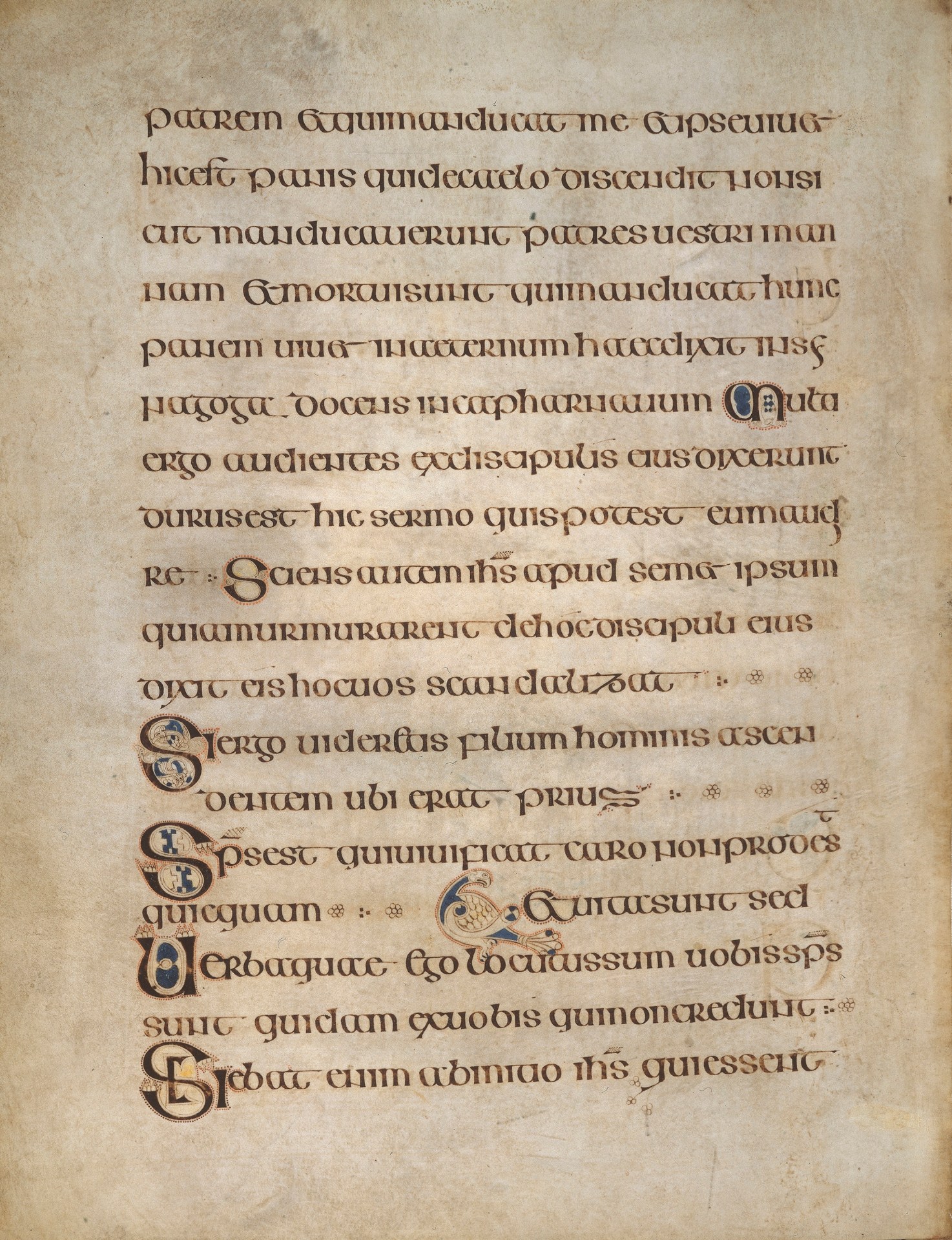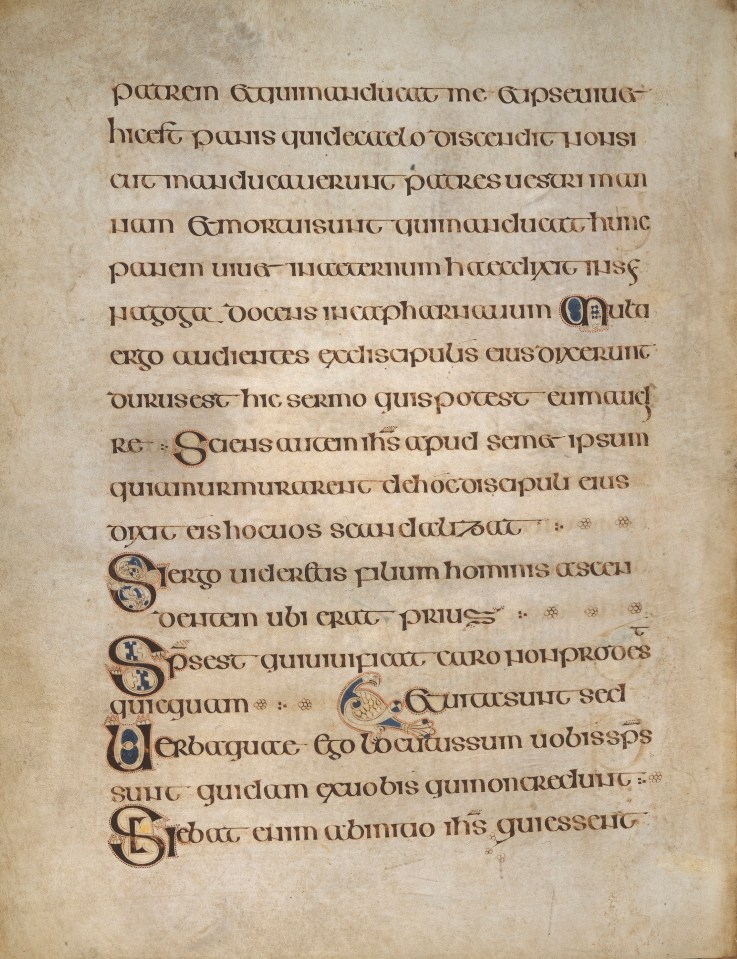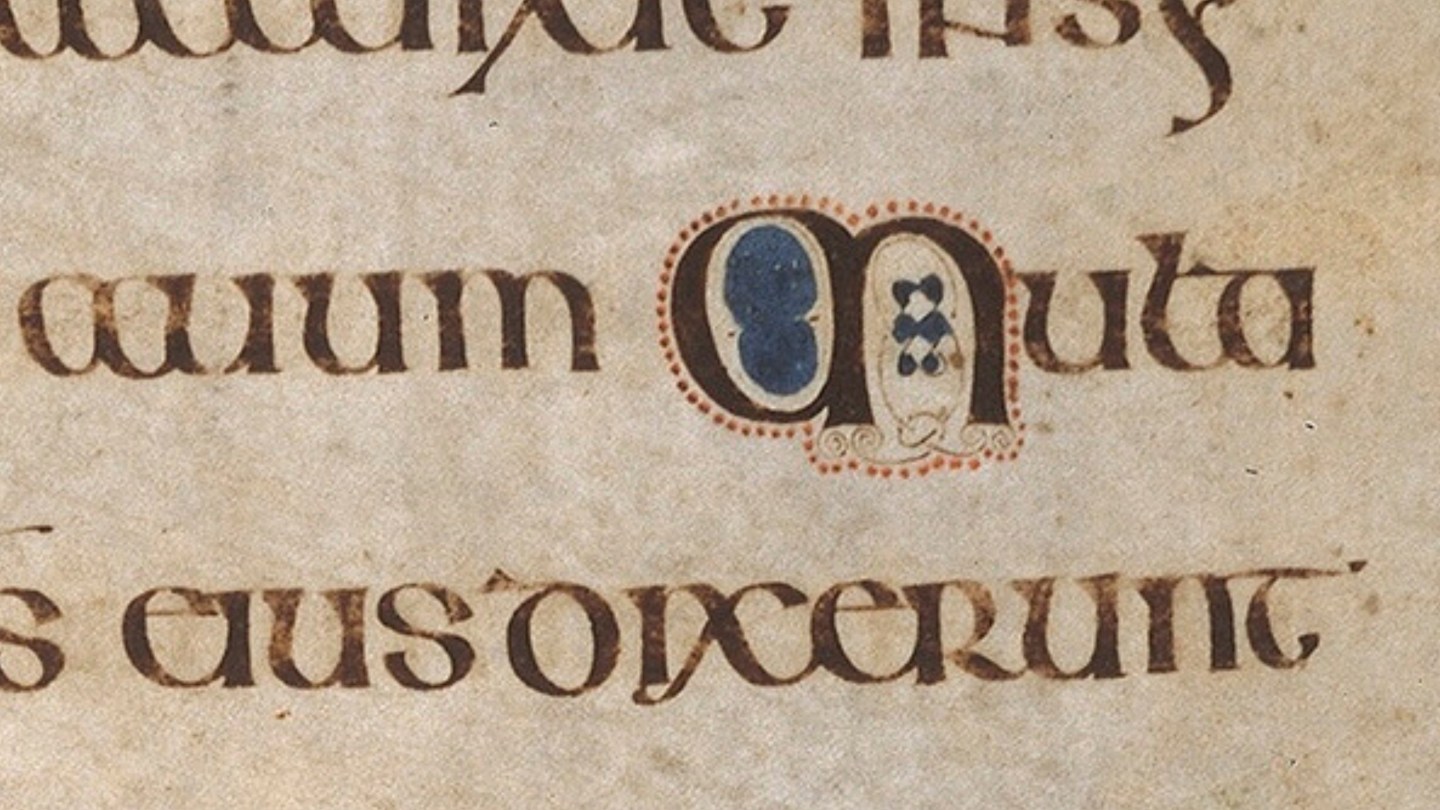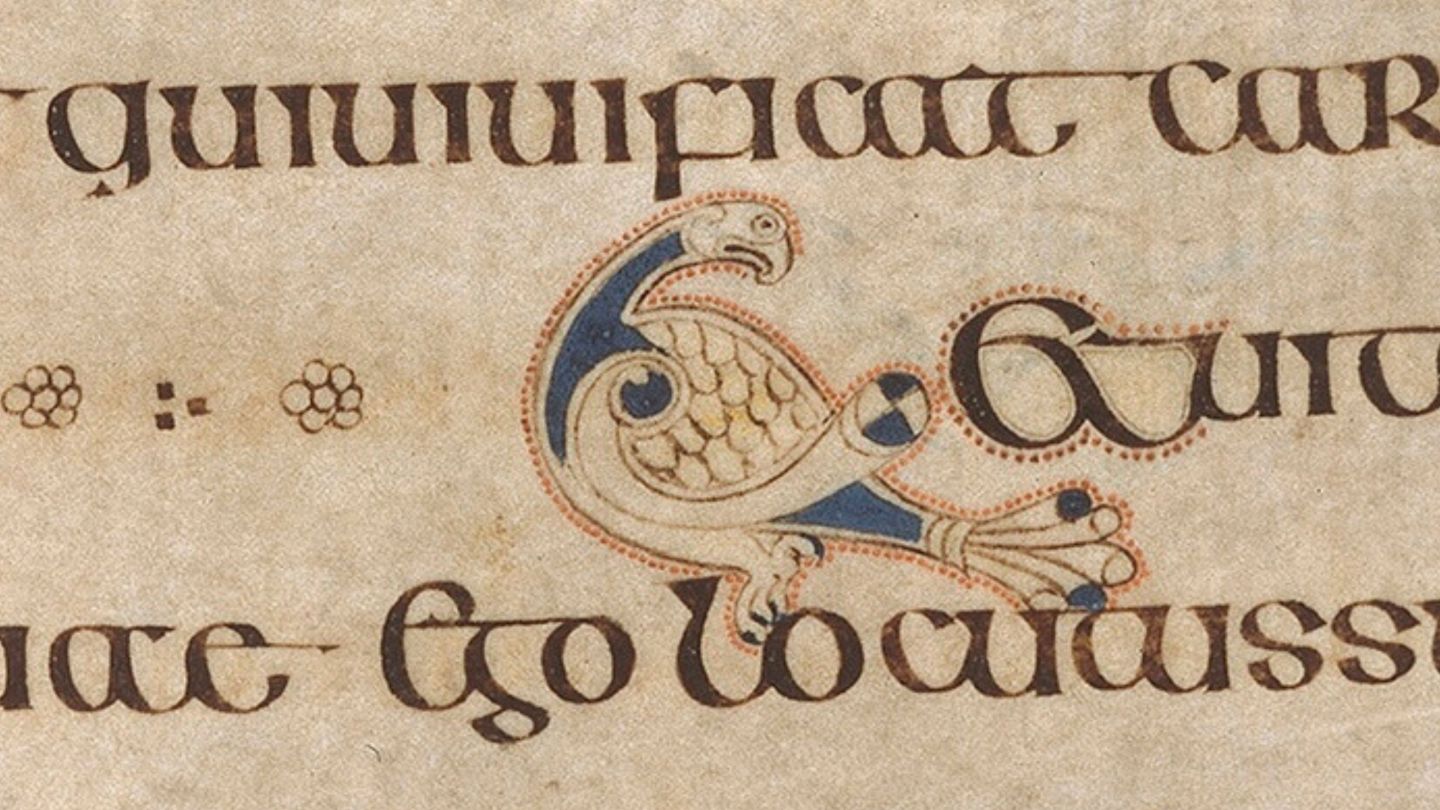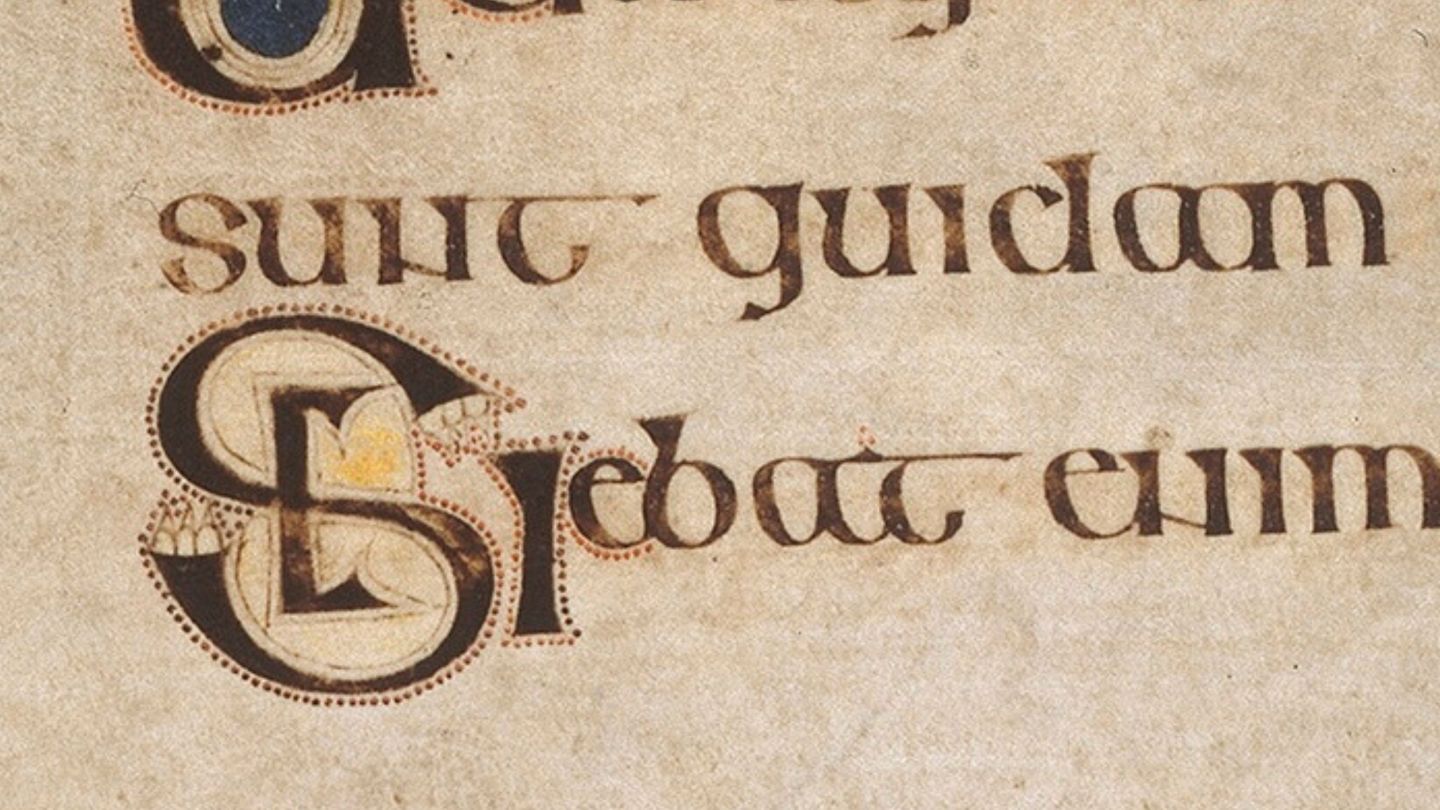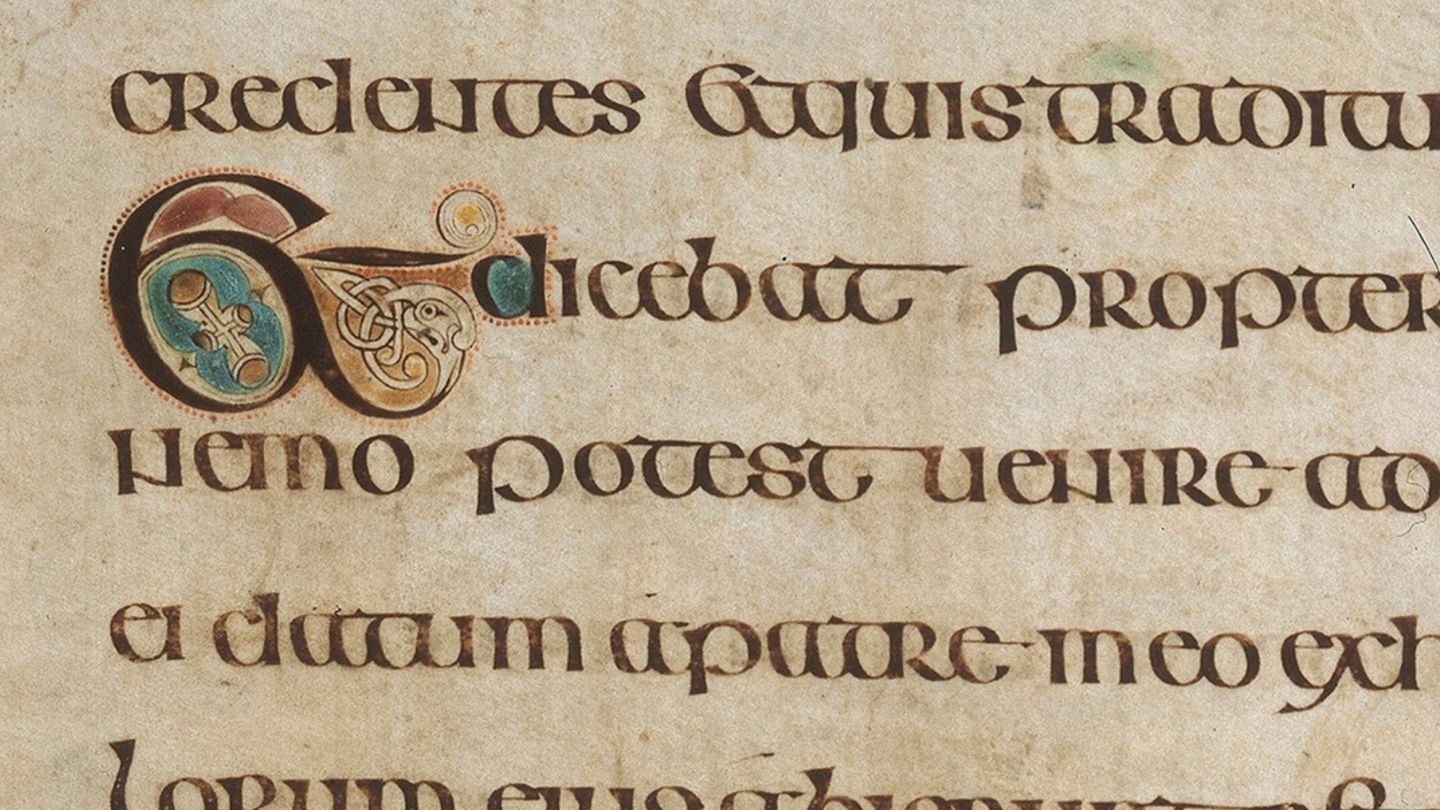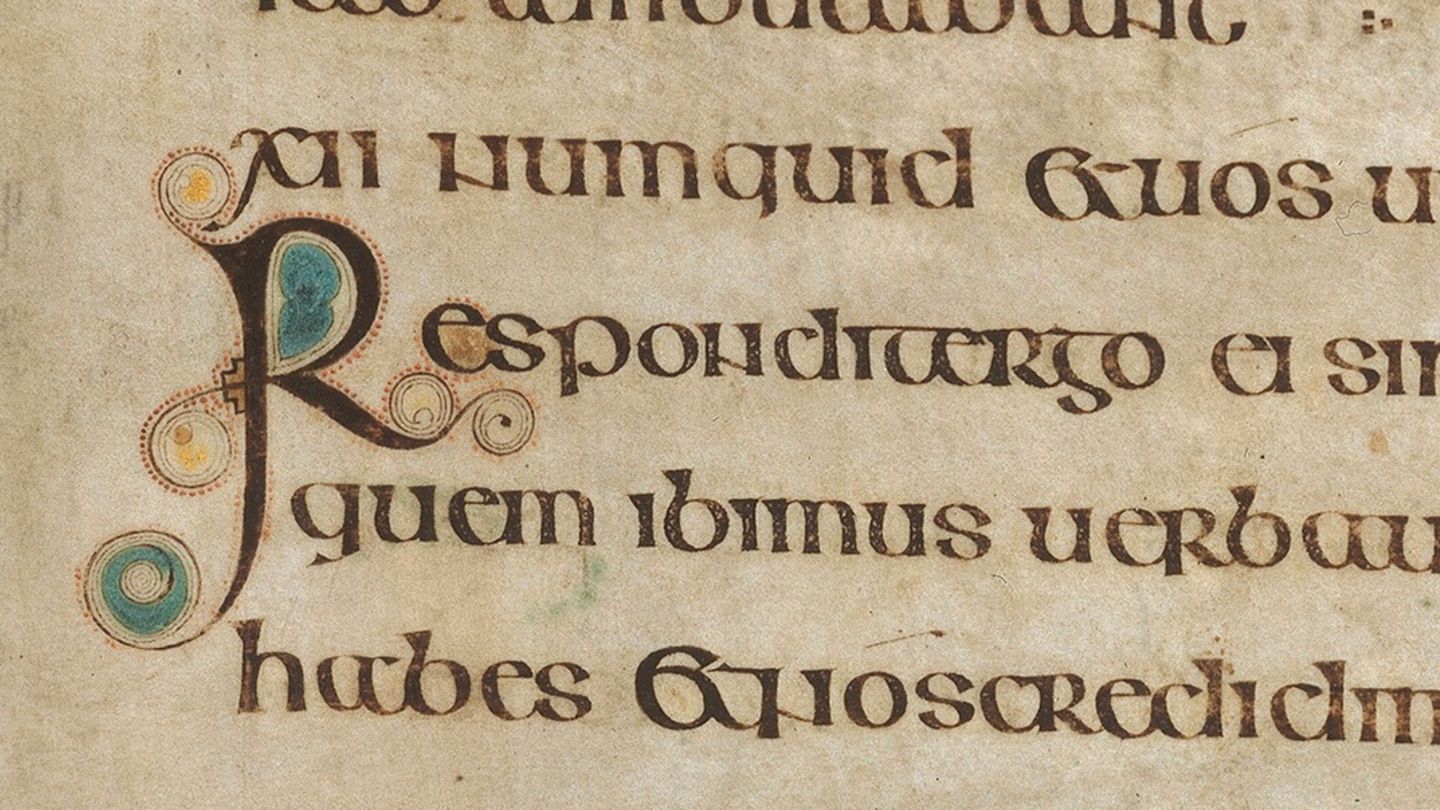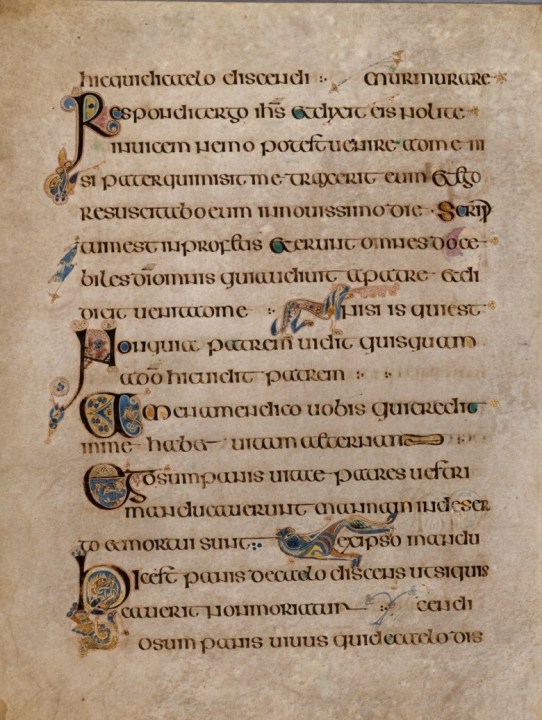
Peacocks were widely used as decorative motifs in manuscripts, sculptures and metalwork in early Christian art. In the Book of Kells the peacock motif is contorted into fantastical shapes to form letters and to draw the eye towards significant gospel texts and passages. The peacock symbolised the incorruptibility of Christ, arising from the belief that its flesh does not putrefy. Because the peacock sheds its tail feathers every year, this is another analogy of resurrection.
The decorated word Si … (‘If’) on line 12 of folio 310v of the Book of Kells introduces the passage when Jesus speaks of his ascension to heaven. The curves of the S are filled with peacocks, symbols of resurrection. Another peacock, standing on line 16, indicates that the text on that line continues on the line above as Jesus speaks of his ascension to heaven, highlighting the phrase verba quae ego locutus sum vobis, spiritus (line 16)/ et vita sunt sed (line 15)/ sunt quidam ex vobis qui not credunt (line 17):
‘The words that I have spoken to you are spirit and life but there are some of you who believe not’ (John 6.54-65).
